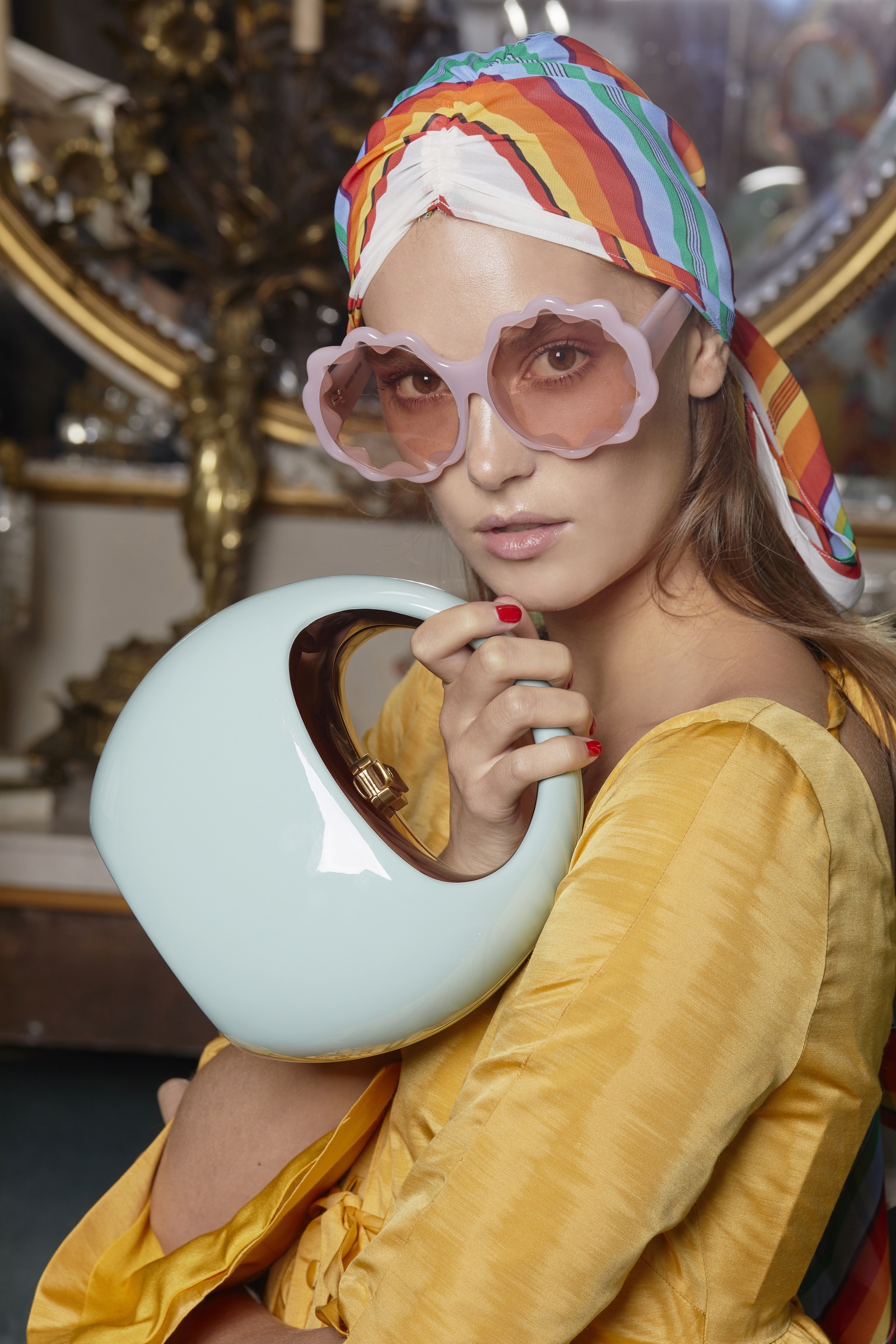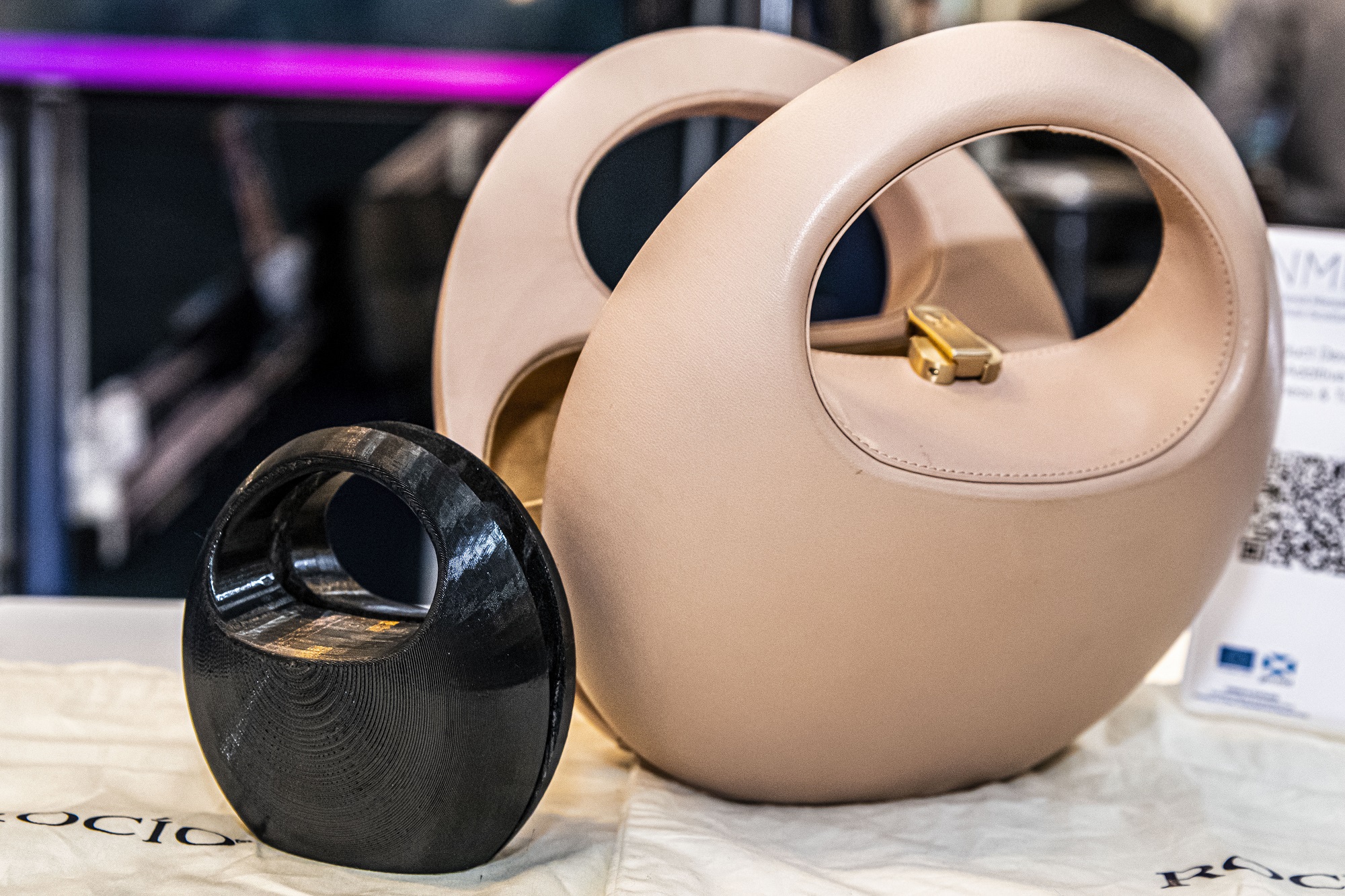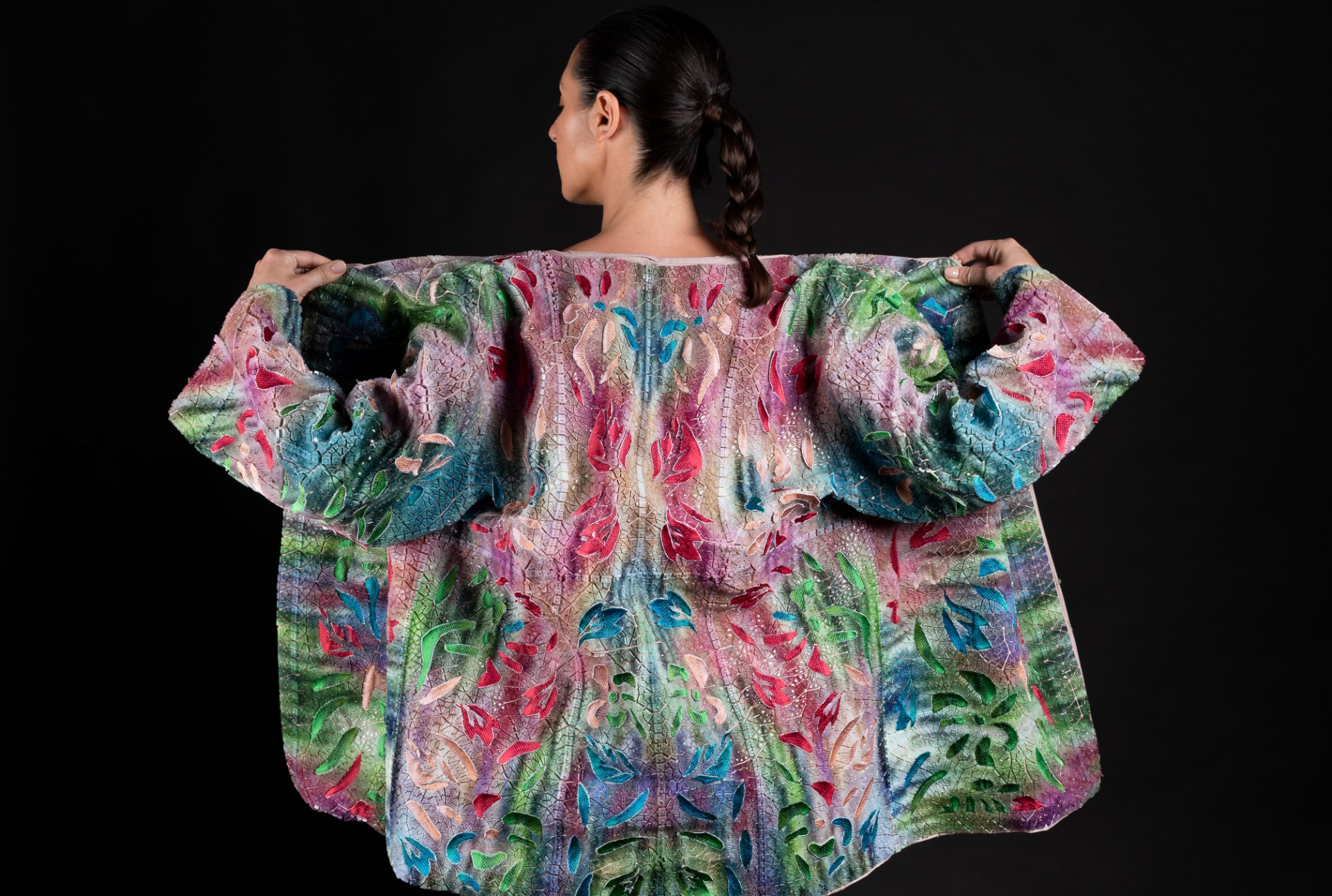3D printing will once again return to the Paris Fashion Week catwalk this year in the form of a reinvented signature ROCIO handbag.
The handbag was created off the back of a research and development project between ROCIO, a Scottish luxury eco-fashion brand, and the National Manufacturing Institute Scotland (NMIS), to explore more sustainable manufacturing techniques for the brand’s handbags.
“A core aim of NMIS is to engage with and support SMEs to facilitate a positive impact on the local economy and the wider industry,” said Andrew Brawley, NMIS Research and Design Engineer. “We have a team dedicated to helping SMEs in their route to innovation and exploitation of new goods and services in response to industry needs – and this ROCIO project is a prime example.
“We hope this will be the beginning of a long-trusted relationship with the team at ROCIO as this new exploration showcases the endless possibilities available.”

3D printing at Fashion Paris Week
Several 3D printed garments and accessories have made their debut on the Paris Fashion Week catwalk in recent years, showcasing innovative uses of the technology to provide greater creative freedom and demonstrate more sustainable manufacturing techniques for the fashion industry.
One of 3D printing’s early appearances at Paris Fashion Week occurred in 2015, when a partially 3D printed suit by designer Karl Lagerfeld took to the runway to showcase a “21st century version” of an iconic 20th century jacket.
Having long experimented with 3D printing and digital manufacturing techniques in haute couture clothing design, Dutch fashion designer Iris van Herpen has also had her fair share of 3D printed garments grace the catwalk of Paris Fashion Week. In 2015, she fabricated a dress onto Game of Thrones actress Gwendoline Christie in real-time using a combination of 3D printing, CNC machining and digital manufacturing techniques, and a few years later introduced her 21-strong 3D printed Spring/Summer 2018 collection to the runway.
Most recently, at Paris Fashion Week 2019, van Herpen debuted a sculptural couture face jewelry collection, named “Cellchemy”, that was 3D printed in partnership with the Delft University of Technology (TU Delft).

Reinventing the ROCIO handbag
Having been seen worn on the arms of celebrity models and actresses like Irina Shayk, Kate Upon and Susan Sarandon, ROCIO’s luxury decorative handbags are traditionally sculpted from harvested acacia wood via a 19-stage process.
Eager to explore new, more sustainable ways of manufacturing its handbags, ROCIO embarked upon a research project with NMIS to combine its own craftsmanship with the center’s technological capabilities. The project focused on developing the inner structure of the bag that could be used as the basis for luxury fabric coverings.
ROCIO chose to explore 3D printing due to the technology’s ability to scale up operations to meet customer demand, while simultaneously providing greater creative freedom within its design process. In particular, the firm wished to investigate different materials and design constructs not possible via its existing manufacturing methods.
As part of the project, the partners produced a 3D printed prototype which was then used by Spanish fashion business school Atelier to create a final full structured leather version of ROCIO’s handbag. Thanks to the 3D printing-powered design process, the reinvented structure captured the same structured art form of the brand’s wooden handbags, enabling it to retain its signature aesthetic characteristics and silhouette.
“We are really taken aback by the results,” said Hamish Menzies, ROCIO Creative Director. “We’re at the heart of sustainable fashion and take pride in each accessory being a uniquely creative masterpiece. The pieces produced are works of art and this unique leather handbag concept delivers outstanding beauty in a structured art form which I believe pushes the boundaries of design.”
The reinvented leather handbag will make its debut on the catwalk of this year’s Paris Fashion Week, and will be the latest creation featuring 3D printing to be showcased on the global stage to the fashion industry.
“For us, exploring the use of a 3D printed prototype is more cost, time, and material efficient in the long term,” said Menzies. “Through using this technology, we are one step closer to improving our endeavors to be even more sustainable, whilst unlocking and embracing the future capabilities of our industry.”

3D printing is fashionable
Aside from Paris Fashion Week, 3D printing has received attention from numerous designers and brands looking to harness the technology’s benefits in terms of creative design, material efficiency, and customization.
Alongside van Herpen, fashion designer and researcher Mingjing Lin has been one of those at the forefront of exploring the use of additive manufacturing within fashion and textile design, having previously worked with SLS 3D printing firm Sinterit to create novel garments for a Beijing Opera performance.
Elsewhere, Italian designer Chiara Giusti has also leveraged 3D printing to produce her own 3D printed clothing line TECHNĒ, while accessory manufacturer Eddy Ricami has used Voxel8’s ActiveLab 3D printing technology to produce unique functional design embellishments to its footwear and apparel products.
Last September, industrial 3D printer manufacturer Stratasys unveiled two new collections with fashion designers Ganit Goldstein and Julia Koerner as part of a project to optimize its direct-to-textile PolyJet technology. The company first showcased its ability to 3D print directly onto fabric at New York Fashion Week 2019, through a collection with fellow fashion designers threeASFOUR and Travis Fitch.

Subscribe to the 3D Printing Industry newsletter for the latest news in additive manufacturing. You can also stay connected by following us on Twitter and liking us on Facebook.
Looking for a career in additive manufacturing? Visit 3D Printing Jobs for a selection of roles in the industry.
Subscribe to our YouTube channel for the latest 3D printing video shorts, reviews and webinar replays.
Featured image shows ROCIO classic wooden handbag. Photo via NMIS.



